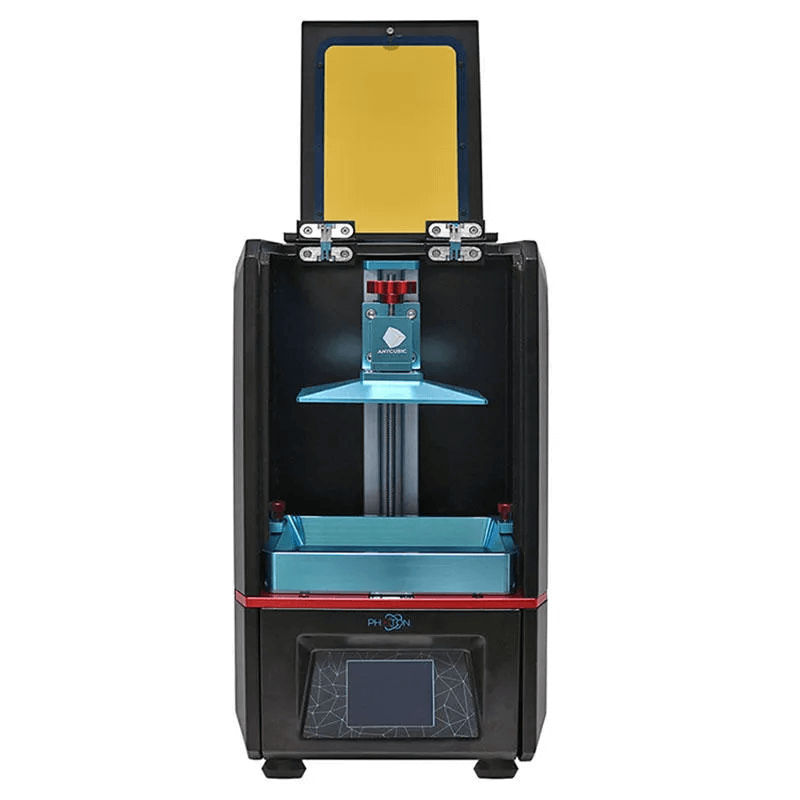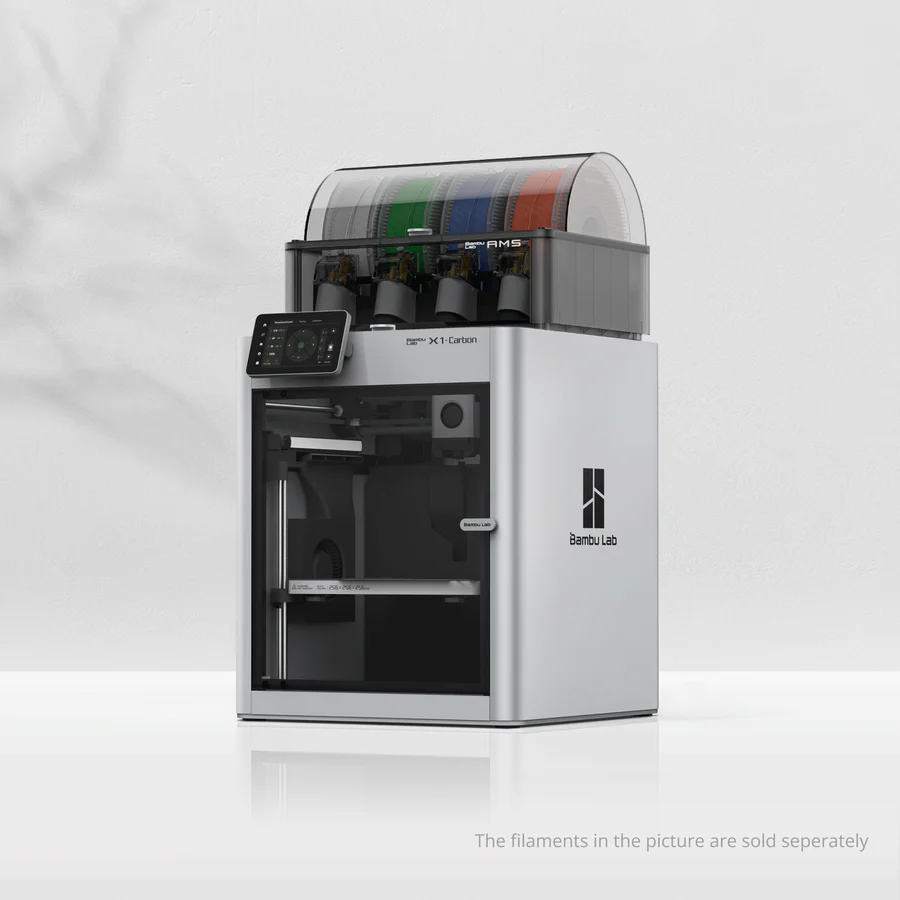Compare Photon vs X1 carbon
Comparison between the best 3D printers
Choose the best 3D printer at the best price. The cheapest 3D printers are here.
Buy a 3D printer here with 3D Fila.
 |
 |
|
| Model | Photon |
X1 carbon |
| Printing Material | Resin | Filament |
| Buy Resin for Anycubic Photon | Buy Filament forBambu Lab X1 carbon | |
| Estimated price | $100,00 | $1449,00 |
| Manufacturer | Anycubic | Bambu Lab |
| Release Year | 2019 | 2023 |
| Print Volume [mm] | 65x115x155 | 256x256x256 |
| Printer Size [mm] | 220x200x400 | 389x389x457 |
| Weight [kg] | 7,2 | 14,13 |
| Power Loss Recovery | NO | YES |
| Maximum Resolution [mm] | 0,1 | |
| Processor | Quad ARM A7 1.2 GHz | |
| Display | Touchscreen TFT 3,5'' | Touchscreen 5'' |
| Power Supply | 40W | 350 W |
| Connectivity | USB | Wifi, Bambu bus, Cartão SD |
| Operating systems | Windows, Mac, Linux | Windows, Linux, Macbook |
| Date of registration in the system | 2021-04-15 | 2024-04-10 |
| Release date | 2019 | 2023 |
| Extra features | The Anycubic Photon DLP is a resin 3D printer that stands out for its affordability and quality. It uses DLP (Digital Light Processing) technology to cure resin layers with precision, offering resolution of 25-100 microns. Its build volume is 115 x 65 x 155 mm, suitable for modest-sized projects. It includes a 2.8-inch touchscreen, USB and SD card connectivity, and a carbon filter to mitigate odors. It is notable for generating efficient support structures through its custom slicing software. Although it requires care in resin handling and post-processing, it is an excellent option for beginners and professionals who want to explore resin 3D printing with high resolution and ease of use. | The Bambu Lab X1 Carbon revolutionizes 3D printing with stunning design, high print speeds, and a streamlined user experience. It stands out with its CoreXY system, a hotend capable of reaching 300°C, allowing for a wide range of filaments. Its LiDAR-assisted bed leveling system, vibration compensation, and AMS multicolor printing capability raise the industry standard. Print quality is impressive, with the ability to fine-tune for perfection. The X1 Carbon, with its closed build volume, not only promises but also delivers one of the most advanced 3D printing experiences available to consumers. |
| Support for multiple colors and materials (AMS and CFS) | NO | YES |
Notes * |
||
| Cost-benefit | 6 / 10 | 7 / 10 |
| Hardware | 0 / 10 | 6.4 / 10 |
| Tela | . | . |
| Print volume | 3 / 10 | 4 / 10 |
| Performance | 0 / 10 | 4 / 10 |
Conclusion |
| In comparing the Anycubic Photon and Bambu Lab X1 Carbon 3D printers, several factors emerge that highlight the strengths and weaknesses of each model, tailored to different user needs and budgets. The Anycubic Photon, with its significantly lower price point, serves as an excellent entry-level option for hobbyists interested in resin printing. Its compact build volume and solid resolution make it suitable for smaller projects, while its ease of use with a touchscreen interface enhances accessibility for beginners. However, the absence of advanced features such as power loss recovery and multi-material printing limits its appeal for more demanding applications. In contrast, the Bambu Lab X1 Carbon represents a higher-end choice that boasts a rich set of features, including faster print speeds, advanced leveling systems, and the capability to handle multiple filaments. Its larger print volume and impressive performance metrics cater well to professional users or serious enthusiasts who require versatility and superior print quality. Despite the higher investment, the enhanced capabilities and modern design justify the cost for those seeking a robust 3D printing experience. Ultimately, the choice between these two models depends on the user's specific needs. For budget-conscious individuals or those new to 3D printing, the Anycubic Photon offers a fun and practical introduction to the world of resin printing. Meanwhile, professionals or dedicated hobbyists will find the Bambu Lab X1 Carbon's capabilities and performance make it a worthy investment for more ambitious projects. Balancing budget against features and print quality is key in determining the best fit. |

